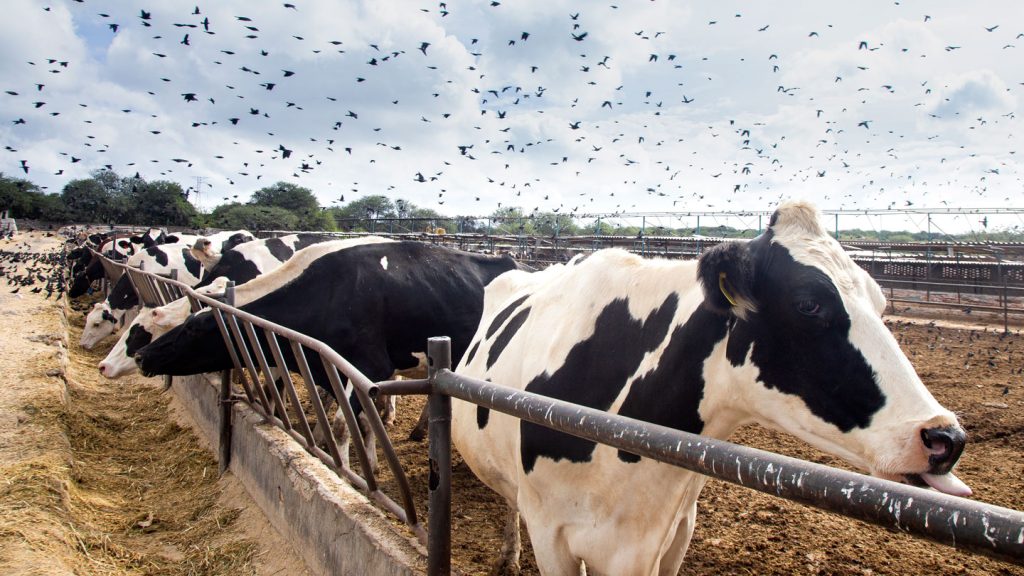The outbreak of the highly pathogenic avian influenza A H5N1 virus in U.S. cattle has raised concerns about its transmission from birds to cows, as well as the potential for the virus to spread to humans and other animal species. Genetic analyses have traced the origin of the outbreak back to late December 2023 and revealed the spread of the virus among dairy cows in at least nine states. Cases of low milk production in dairy cows were reported in late January and early February, leading to the confirmation of H5N1 diagnosis by the U.S. Department of Agriculture on March 25.
The virus has not only infected cattle but has also spread to other species, including cats, raccoons, poultry, and wild birds. Infected dairy cows carried the virus to different U.S. states, leading to concerns about the potential mixing of different virus genotypes and the emergence of more lethal or transmissible strains. Additionally, a dairy farm worker in Texas contracted an eye infection from contact with sick cows, highlighting the risk of zoonotic transmission from animals to humans.
Genetic analyses have revealed a new subtype of the H5N1 strain, known as B3.13, which emerged in Europe in 2020 and was introduced to the Americas in 2021. The virus has demonstrated a high rate of reassortment, the exchange of genetic segments with other flu viruses, leading to the creation of multiple genotypes. The B3.13 genotype has been successful at replicating in cattle, leading to concerns about its potential to adapt to spread easily in mammals.
Despite the low risk of widespread transmission of the virus in people, the outbreak is reminiscent of the early stages of the COVID-19 pandemic, with genetic data highlighting the virus’s evolution and spread. Scientists are closely monitoring the situation to determine how the virus can jump from wildlife to domestic animals and humans and are working to contain its spread in cattle to prevent further zoonotic infections.
With various genetic changes identified in different subtypes of the virus, researchers are assessing the likelihood of the virus evolving to become more contagious or able to evade the immune system. Improved surveillance measures and rapid response protocols are being implemented to prevent a larger outbreak in cattle and reduce the risk of transmission to humans.
While the spread of the highly pathogenic avian influenza A H5N1 virus in U.S. cattle poses a significant threat, ongoing research and surveillance efforts are crucial in containing the outbreak and preventing further transmission. By understanding the genetics of the virus and its patterns of spread, scientists can develop effective strategies to protect both animal and human populations from the potential impacts of this infectious disease outbreak.


